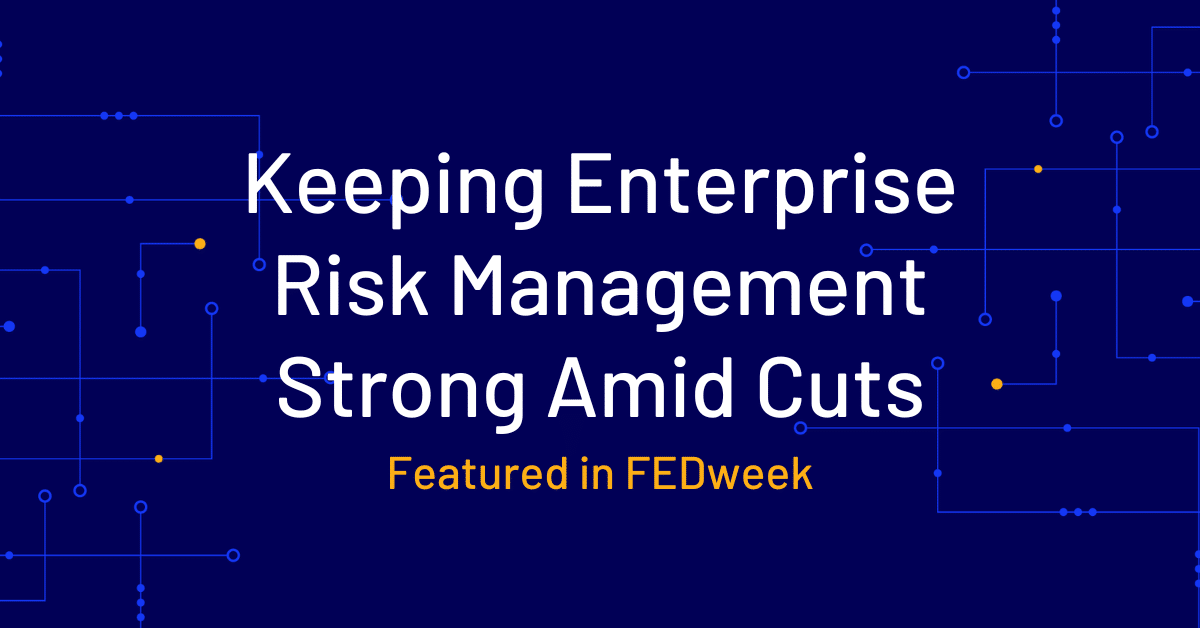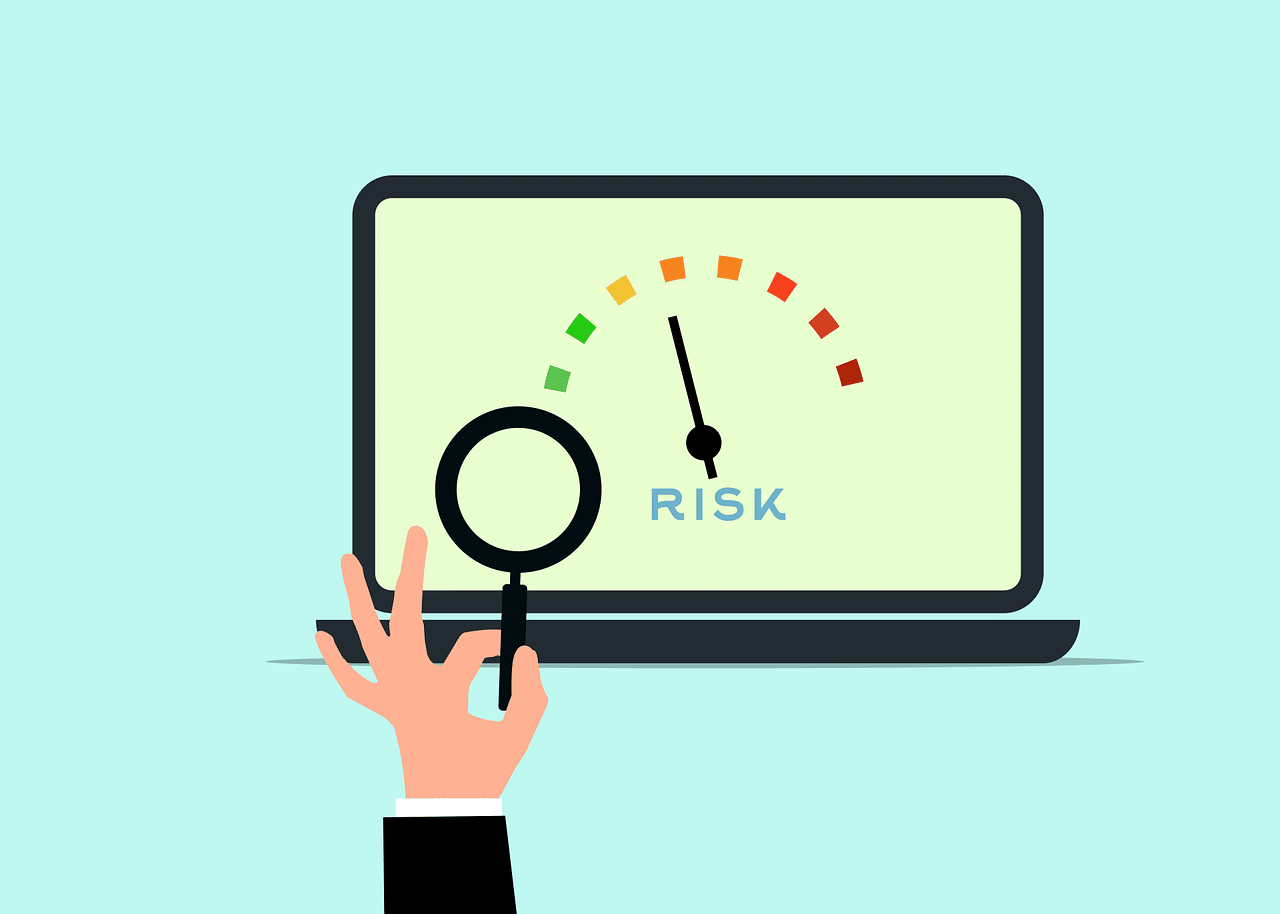Business risks today are largely unpredictable. The past year alone dealt organizations fresh challenges, such as AI rewriting workforce rules, geopolitical shocks and tightening regulatory policies. You need continuous risk visibility to secure your organization in this rapidly changing landscape. That is what risk, control and self-assessment (RCSA) delivers. But, what is RCSA? This article will walk you through the RCSA meaning, how to conduct one and even share best practices for implementation to ensure its lasting impact in your organization.
What Is RCSA?
RCSA is an ongoing systematic process that enables organizations to identify operational risks, evaluate control effectiveness and mitigate exposures. The acronym itself lays out the fundamental elements of this process:
- Risk: The R, in RCSA, refers to uncertain events that could impact an organization’s ability to achieve its objectives.
- Control: The C in RCSA refers to an organization’s preventive, detective and corrective systems, which a company has implemented to prevent risk materialization or reduce impact.
- Self-assessment: This is what distinguishes RCSA from other risk methodologies. The SA of RCSA emphasizes that risk management is a self-directed process where the actual performers of business activities own the evaluation process, making risk management proactive.
RCSA enables organizations to create a systematic approach to risk management. It promotes clear accountability by assigning risk ownership to specific individuals across all organizational levels. The result? Risk considerations become embedded in an organization’s processes, ensuring they’re actively rather than reactively managed.
RCSA’s proactive approach aligns with the principles emphasized by the Basel Committee on Banking Supervision. While the Committee’s Basel Accords do not explicitly use the term “RCSA,” its emphasis on self-assessment reflects and validates the core values of what’s now widely recognized as RCSA. For instance, in Basel III’s Pillar 2 framework, banks must implement internal capital adequacy assessment processes (ICAAP) and maintain operational risk management frameworks.
The RCSA framework directly contributes to the ICAAP by providing a structured way for banks to identify and assess their operational risks. Similarly, RCSA’s focus on ongoing risk and control evaluation directly promotes compliance with Basel III.
The RCSA Framework: 7 Key Components
While RCSA frameworks look different between organizations, effective models have seven components that work together to create a foolproof risk management system. These are:
Risk Identification
Without a thorough and accurate understanding of the risk it faces, an organization’s efforts to evaluate controls and implement mitigation strategies will be limited and potentially misdirected. Risk identification is the initial and foundational component of any effective RCSA. It seeks to catalogue all potential threats that could impact the organization’s objectives. It entails a systematic analysis of business risks across various categories, including:
- Operational risks
- Financial risks
- Compliance risks
- Strategic risks
Organizations use different approaches for risk identification, but the most common include process mapping, failure mode and effects analysis and structured brainstorming sessions.
Risk Scoring
Risk scoring (assessment) involves analyzing and evaluating the potential severity of the earlier identified risks without any controls. This step provides a baseline against which risk managers can determine the raw risk exposure and measure the efficiency of current control activities before they consider any new ones.
Risk scoring uses a system like the likelihood and impact matrices. These matrices employ a numerical scale (e.g., 1-5) where likelihood refers to the probability of occurrence (e.g., 1 = very unlikely, 5 = very likely) and impact refers to the potential consequences should the risks happen (e.g., 1 = minimal impact, 5 = catastrophic impact on finances, reputation or operations).
Note, though, you don’t have to limit your risk-scoring initiatives to these two methodologies. You can develop models that weigh different impact types based on specific regulatory concerns or strategic priorities.
Control Evaluation
This RCSA component assesses the design and effectiveness of current controls against the earlier identified risks. This evaluation considers:
- Control types: Risk controls take preventive, detective and corrective forms.. Control evaluation seeks to identify which of these three an organization has in place.
- Design effectiveness: Once the control types are identified, they’re assessed to determine whether they’re appropriate for addressing the identified risks and how logical their placement is within process flows.
The control evaluation process may incorporate tools like risk and control self-assessment questionnaires, documentation reviews and interviews with key control operators. Tech-based controls may undergo more thorough assessments, including penetration testing to evaluate their effectiveness. Regardless of the steps or tools used, this RCSA component arms risk managers with a detailed understanding of the control environment’s strengths and weaknesses. This then creates a foundation for accurately calculating residual risk levels.
Residual Risk Analysis
This component works toward identifying the level of risk exposure that remains after considering the effectiveness of current controls. It enables organizations to determine whether existing safeguards provide adequate protection or if the identified risks align with their risk appetite.
Just as with other steps, organizations use various methods for this analysis, ranging from simple qualitative adjustments (high/medium/low) to advanced quantitative models that provide numerical expressions of residual risk. However, the standard residual risk formula = Inherent Risk − Control Effectiveness
Mitigation and Planning
If the identified risks exceed the organization’s current risk appetite, mitigation and planning are done next. Risk professionals establish structured approaches to address the identified gaps during this step. This involves developing and prioritizing remediation steps to further reduce the likelihood of occurrence and impact of the residual risks. Organizations use risk management strategies like:
- Patching control gaps
- Automating controls
- Process redesign
Monitoring and Reporting
RCSA requires ongoing monitoring and reporting to remain relevant and practical. The monitoring and reporting component establishes mechanisms for organizations to track changing risk profiles and control effectiveness over time. Key elements of this component include:
- Key risk indicators (KRIs) that provide early warning signals of increasing exposure
- Key control indicators (KCIs) that monitor the effectiveness of current controls
- Heat maps and risk dashboards that enable teams to visualize the organization’s risk profile and identify areas of high risk
Continuous Improvement
Continuous improvement ensures the RCSA framework remains aligned with an enterprise’s changing risk profile and strategic objectives. Key elements of this component include annual framework reviews that incorporate industry best practices, periodic reassessment of risk scoring approaches and post-incident reviews.
How To Conduct an RCSA: Step-by-Step
Here’s how to conduct an RCSA to ensure comprehensive risk coverage and lasting results:
Define Scope
As with the key components of an RCSA, the first step in any effective RCSA implementation is to establish what will be assessed. This step first sets the stage for RCSA success, as it helps you channel your risk management efforts and resources only toward appropriate departments, processes and activities.
Engage Key Stakeholders
Performing an RCSA without engaging process owners, audit representatives and other stakeholders is like trying to solve a puzzle without all the pieces — you’ll never get the whole picture. As the individuals working behind the scenes, these stakeholders experience the day-to-day realities, potential pain points and subtle risks that might not be apparent to risk managers and compliance officers. Consequently, they better understand the risks within their departments and how their activities connect with and impact other departments within the organization.
Therefore, identify and engage the individuals, teams and departments directly involved in the assessed processes. To solicit their input on potential risks and existing controls, consider:
- Interactive workshops
- Structured interviews
- Surveys using questionnaires
Gather Data
While engaging stakeholders, ensure you collect data such as:
- Audit logs
- Incident reports
- Results from previous RCSAs, internal audits and other risk assessments
- Flowcharts, policies and other process documentation
- Key risk and control indicators
- Regulatory bulletins
- Technology vendor alerts
Implement data quality controls such as validation checks and source credibility evaluation to ensure the accuracy and reliability of the data collected.
Score Risks
Risk scoring makes prioritization and comparison much easier. To effectively score risks, combine qualitative and quantitative methods. For instance, implement a standardized risk scoring framework with a 5-point likelihood scale defined with specific criteria where 1 = remote risks (once in 10+ years) and 5 = almost certain (multiple times annually). Simultaneously, apply quantitative risk assessment techniques such as the Monte Carlo simulation for risks with numerous variables.
Map Controls to Risks
This step links existing controls to the specific risks they’re intended to mitigate, which enables your organization to pinpoint gaps. Here’s how to go about it:
- Review existing policy documents, role descriptions and responsibilities
- Categorize each control based on the type (preventive, detective, corrective), nature (manual, automated, semi-automated), frequency (continuous, daily, weekly, monthly, quarterly or annual) and ownership (business unit-specific, third-party provided or regulatory mandated)
- Identify primary controls that directly address each risk, and secondary controls that offer supplementary protection
Assign Ownership
Risk ownership transforms RCSA from another compliance exercise into an impactful risk management approach. It promotes a culture of accountability and adherence to established and emerging controls. Therefore, establish a multi-level ownership structure comprising:
- A risk owner accountable for overall risk management program
- The control owner who designs, implements and oversees controls
- A remediation owner you’ll hold responsible for addressing identified gaps
- The monitoring owner in charge of ongoing risk and control tracking
Beyond assigning ownership, develop detailed remediation plans with specific action descriptions, measurable outcomes and testing criteria to verify the efficiency of controls. Additionally, organize weekly status and acceptance meetings, and establish escalation procedures for ownership disputes.
Automate Workflows
RCSA is effective, but doing it manually increases the risk of errors and takes up a lot of human capital. Deploy reputable governance, risk and compliance (GRC) tools such as Onspring to automate the process. Automation streamlines execution and enhances consistency. It also offers you continuous, real-time visibility into risk management, enabling your organization to identify and mitigate risks proactively.
Benefits of RCSA Implementation
RCSA unlocks the following benefits for your enterprise:
Proactive Risk Culture
RCSA transforms risk identification from a central function to an integral part of everyone’s job. This distributed ownership naturally promotes individual accountability and greater adherence to established controls, reducing the likelihood of human-triggered risks.
Moreover, as noted, a key part of RCSA is stakeholder engagement through workshops, surveys and discussions. Such engagements empower employees with the knowledge to proactively address organizational risks in their daily decisions proactively. These collective, individual-led efforts enable the organization to proactively uncover emerging risks, transforming its risk management culture from reactive firefighting to proactive risk anticipation.
Regulatory Alignment
A well-executed RCSA process creates a comprehensive audit trail encompassing risk logs, process maps with identified risks and risk treatment plans. These documents demonstrate that your organization systematically considered and handled vulnerabilities during regulatory audits on GDPR, HIPAA and ISO 27000 compliance.
Furthermore, strong RCSA practices prove your organization is committed to compliance, which builds credibility with regulatory bodies. This results in less intrusive supervision and facilitates collaborative regulatory relationships.
Cost Savings
Effective RCSA programs facilitate proactive vulnerability identification and remediation, thus decreasing the frequency and severity of operational incident occurrence. This positively impacts the bottom line by preventing the costs associated with reactive risk remediation, reputational damage and non-compliance fines.
RCSA Best Practices
To maximize the impact of RCSA in your organization, consider the following best practices:
Maximize AI
Artificial intelligence is here to stay, so you might as well maximize it. AI especially offers multiple opportunities for RCSA enhancement. For instance, deploy machine learning algorithms to consolidate and analyze data from different stakeholders to identify potential emerging risks before they materialize. Use AI for risk scoring to reduce human bias in risk evaluation while freeing up your team to focus on more strategic risk-management tasks.
Centralize Data
Information silos top the list of obstacles to effective risk management. Establish a centralized risk database to serve as a single source of truth for all risk-related information across the organization. This will facilitate a consistent understanding of risks throughout the organization, leading to enhanced risk-management collaboration.
Third-Party Audits
While RCSA aims to make risk management a self-directed process, enlisting a qualified third-party audit agency to review and validate your assessments will enhance the credibility and reliability of your RCSA results. Qualified audit agencies possess specialized knowledge and experience in risk management. As such, they can help you identify potential blind spots and opportunities for improvement in your RCSA processes. Engage subject matter experts for high-risk areas, and use third-party risk management software to benchmark your RCSA processes against industry best practices.
Transform Risk Into Your Competitive Advantage
RCSA empowers your organization to continuously identify, assess and mitigate the most critical risks, turning uncertainty into valuable insight. Ready to implement RCSA into your processes, but don’t know where to start? Talk to an Onspring expert today to discuss a personalized path forward.




